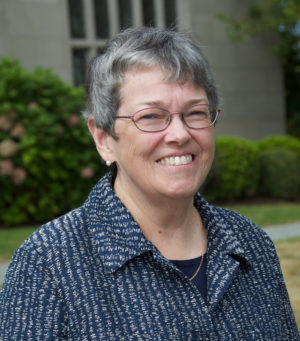The importance of complementary therapies in end-of-life care
When you think about hospice or end-of-life care, a common misconception is that the focus of the providers is solely on pain management. While this is a key component of any hospice care program, many providers, including Hospice of Westchester (HOW), believe in the importance of a holistic approach to treating patients, not just their symptoms. It has been proven that patients diagnosed with a life-limiting illness benefit from the addition of alternative therapies into their treatment plan. Often known as Complementary Care, these therapies can maximize patients”™ comfort and overall quality of life.
Caring for the “whole” patient should be an essential component of any hospice program. Mind-body complementary therapies like massage, reflexology, music therapy and art therapy can help ease tension, reduce anxiety levels and improve the overall comfort of the patient. We are proud to offer all of the above therapies, at no cost to our patients, through The Anna & Louis H. Shereff Complementary Care Program.
Music Therapy
Since 2017, HOW has partnered with the Music Conservatory of Westchester and its Music Therapy Institute to offer music therapy services to our patients.
According to Lisa Sandagata, director of outreach at Music Conservatory of Westchester, music therapy provides emotional support, reduces anxiety, can alleviate pain and create a social context involving loved ones. Patients receive the opportunity to be musical, explore the music of their lives and recall their special memories and moments through song. Music can also provide physical comfort and reduce the loneliness, isolation or depression that are often experienced by patients at the end of life.
“Music is a social art and something made to be shared,” she said. “Enjoying the music that has been present in all the stages of a patient”™s life provides a wonderful opportunity for these individuals to think of happy memories from their past. It also helps them make positive memories in the present with those surrounding them.”
Music therapy sessions can also feature music-assisted relaxation, where the therapist will play an improvised piece of music to help the patient feel more comfortable. This type of receptive experience gives the patient the opportunity to relax and enjoy the many benefits of music.
Art Therapy
Participating in art therapy provides an opportunity for patients of all ages to express themselves through artistic activities. Art can produce a release of feelings that can be healing to the mind, body and spirit.
Valeria Koutmina, art therapist with HOW, says that art therapy provides a way of sharing space and communicating with a patient and their family. Mark-making is meaning-making, and visual art is an organizing, life-affirming and grounding process that is especially important at a time in life that may presents challenges, emotions and unknowns. After meeting a patient and assessing their interests and abilities, she”™ll bring several types of artistic materials for them to choose from.
“It becomes a collaboration between the art therapist and the patient. It is a noninvasive part of the hospice process, acting as a soothing modality that engages their mind and their creativity,” she said.
One of the most important benefits of art therapy is that it gives individuals autonomy and the opportunity to make a choice in whatever medium they”™d like to use at a time when they may feel a lost sense of control.
“The end of life is sometimes complicated. Art therapy gives individuals the opportunity to take in art and create something beautiful during their final journey. And sometimes art making is not even what happens during a session. It”™s about the conversation around it, trying different materials and enjoying the process.”
Massage Therapy
It is widely accepted that power of touch can have a healing impact on pain and decrease stress. Massage is a form of structured therapeutic touch, which can relax patients, relieve muscle tension, reduce anxiety levels and blood pressure, boost the immune system and moisturize the skin.
Licensed massage therapist Maria MacIlvane, who is part of our team at HOW, says there are many benefits of massage therapy on hospice patients, including helping with muscle tension, circulation and anxiety. She also works with patients”™ family members to teach them what they can do in between sessions to help their loved ones.
“When patients know that someone is with them, holding their hand and providing a compassionate touch, the effects are amazing,” MacIlvane said.
Reflexology
Reflexology is based on the belief that specific areas of the feet and hands correspond with specific parts of the body. Gentle stimulation of these areas with the thumbs and fingers relieves stress and tension, improves circulation, promotes normal body function and results in a feeling of deep relaxation.
HOW has two Nationally Certified Reflexologists that work with our patients, Gabrielle Zale and Diane April.

“Ultimately, touch is the greatest healer, particularly at this final journey in life,” Zale said. “Even though some patients may not be awake and alert, by touching them in this way you are acknowledging that they are still there and still part of the world.”
Zale added that even if a patient can”™t speak, she is able to sense small body changes that show the effects of her practice.
“It”™s a subtle energy shift. Their breathing slows down ”” you can tell they are relaxing and may be feeling less pain and anxiety. They can tell that you are acknowledging them and are really present with them,” she stated.
Mary K. Spengler is CEO of Hospice of Westchester.